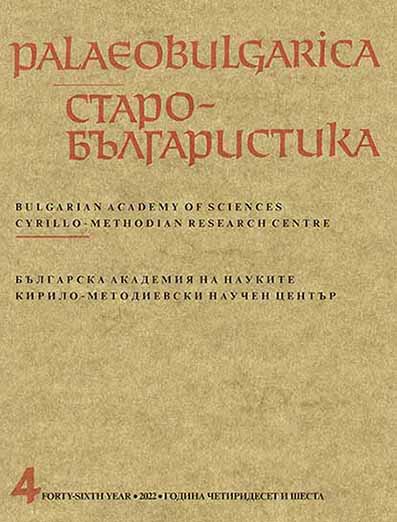Преводната парадигма на двукоренните думи с ин- ‘един’
The Paradigm of Translational Correlates to the Two-Root Words with ин- ‘one’
Author(s): Lora TasevaSubject(s): Language studies, Language and Literature Studies
Published by: Кирило-Методиевски научен център при Българска академия на науките
Keywords: Greek-Slavonic translation correlates; Old Church Slavonic lexicography; diachronic word-formation.
Summary/Abstract: The article studies the Greek lexemes which motivate the appearance of Slavonic compound words with their first component ин- in direct singulative meaning or in denotations resulting from it. Their Slavonic transponents in translated writings from the ninth to the fifteenth century are systemized on the basis of both classical Palaeoslavic dictionaries and several dozens bilingual word indices to particular written monuments. The analysis undertaken allows the author to draw the following conclusions: 1) the root ин- ‘one’ takes part in words which translate 22 Greek lexemes and their Slavonic counterparts are 159 lexical units in total; 2) the spectrum of meanings conveyed by the morpheme ин- ‘one’ covers two main groups – first, a numerically small group of lexemes with a specific singulative meaning always parallel to Greek counterparts containing μονο , and, second, a numerically larger group of words which are characterized by meanings related to ‘gathering, cooperation, totality, integrity, unity’ and which are motivated by various Greek morphemes such as ὁμο , συν-, ὁλ(ος), (ἅ)πας; 3) there is certain evidence that the archaic root ин- was characterized by a semantic range which was broader than its main successor in the development of the language – the pronoun base jedin-.
Journal: PALAEOBULGARICA / СТАРОБЪЛГАРИСТИКА
- Issue Year: 2022
- Issue No: 4
- Page Range: 51-78
- Page Count: 28
- Language: Bulgarian
- Content File-PDF

